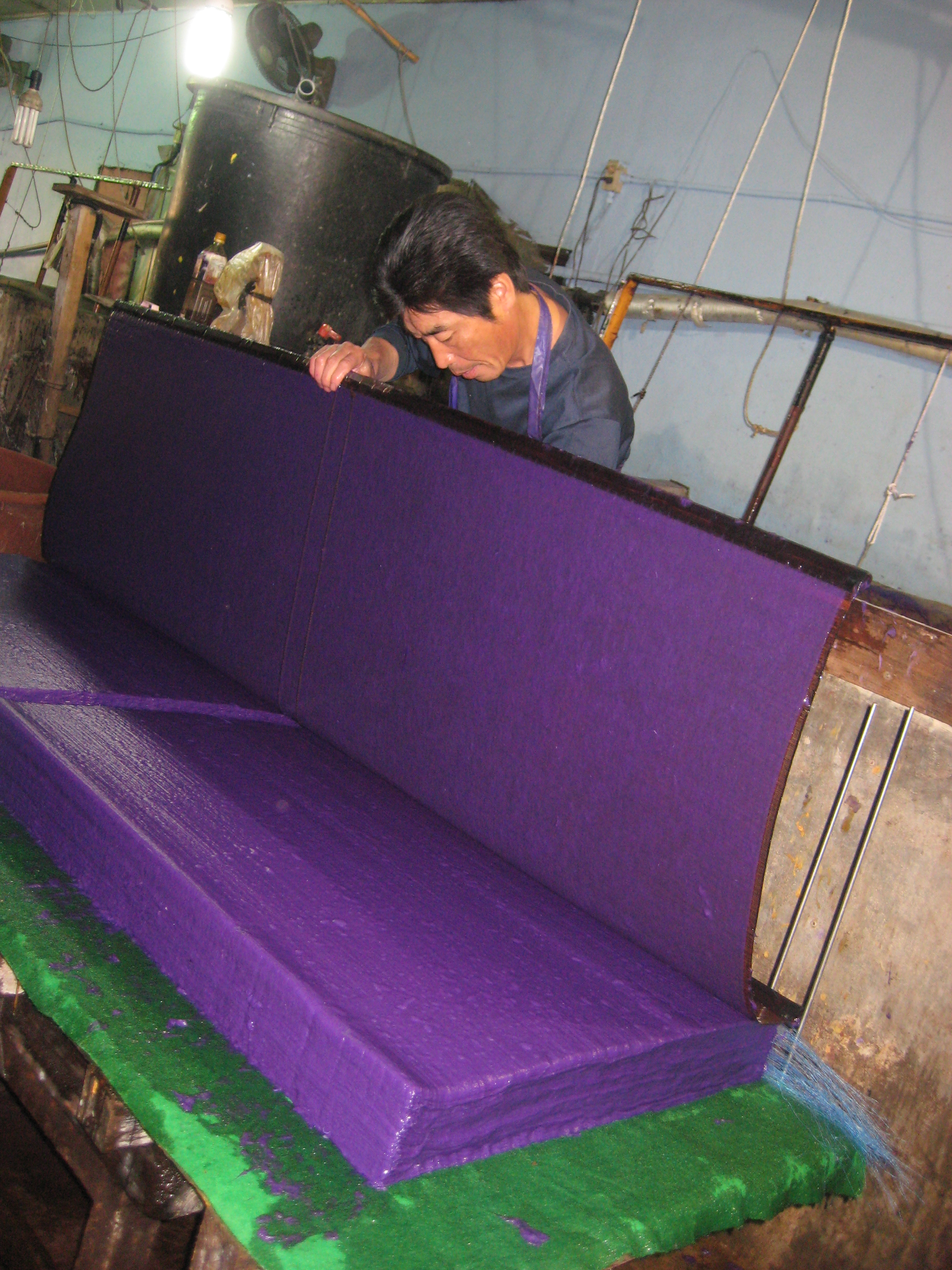Hanji and more in Andong
The Ministry of Education (MOE) in Ulsan, South Korea has treated us like royalty. They take care of everything. When we first got here, we had orientation for 10 days that somewhat prepared us for teaching in Korea. But of course, learning to teach is something you have to practice to actually learn how to do it. Since we’ve been in Ulsan, we have been on two overnight trips with the MOE. The MOE pays for everything on these trips. They take care of transportation, food and the hotel room. It’s such a blessing that we get to experience different parts of Korea that hardly any Koreans get to experience themselves.
We went to Andong for our first trip. Andong is a small city in the Gyeongsangbuk-do province.  It took about three hours to get there from Ulsan. Andong is known for its traditional paper making factory and for the mask festival, which was canceled this year because of the H1N1 flu. After the bus ride, they provided us with lunch at a bulgogi restaurant.
It took about three hours to get there from Ulsan. Andong is known for its traditional paper making factory and for the mask festival, which was canceled this year because of the H1N1 flu. After the bus ride, they provided us with lunch at a bulgogi restaurant.
Then, they took us to the hanji or paper factory where we made our own traditional Korean mask out of paper mache. But, this wasn’t just any kind of paper. This type of paper, that they call hanji, is handmade. It’s such an old tradition that I hope the owners will carry on the art of paper making to the younger generation. Unfortunately, these factories are hard to find these days.
We took a tour of the factory and saw how hard the old men and women (ajoshis and ajummas) work. Hanji is all-natural and made from mulberry bark. It is steamed in water and then two women separate each piece of the bark individually. Another job for the ajummas (old women) is to dry the piece of paper on a hot very piece of metal. Then, the ajoshis (old men) dye the paper with all kinds of beautiful colors.
Not only is it beautiful how they make hanji, but fall in Korea is so beautiful! The national tree, the ginkgo biloba, starts changing colors from a vibrant green to a deep yellow. We had the privilege to see the fall season in a traditional folk village called Hahoe village and on our way to Bongjeongsa temple.
Another perk to going on these trips, is that we get to meet and get to know more people in our program. There are two organizations that the MOE is responsible for, EPIK (English Program in Korea) and TALK Scholars. Most of the time TALK Scholars are still taking classes in college. EPIK teachers must have a bachelor's degree. But people from both organizations are equally great people. Though, I was really surprised to meet a girl from Oklahoma who went to a college near my hometown! She is currently a student at University of Arkansas at Fort Smith (UAFS). There is another guy who goes to UAFS as well! And a girl from Conway, Arkansas. This is just proof that the world isn't as big as it seems and as we try to explore more, we are able to find a taste of home anywhere.









